Using GOAP for Advanced Gaming AI Techniques
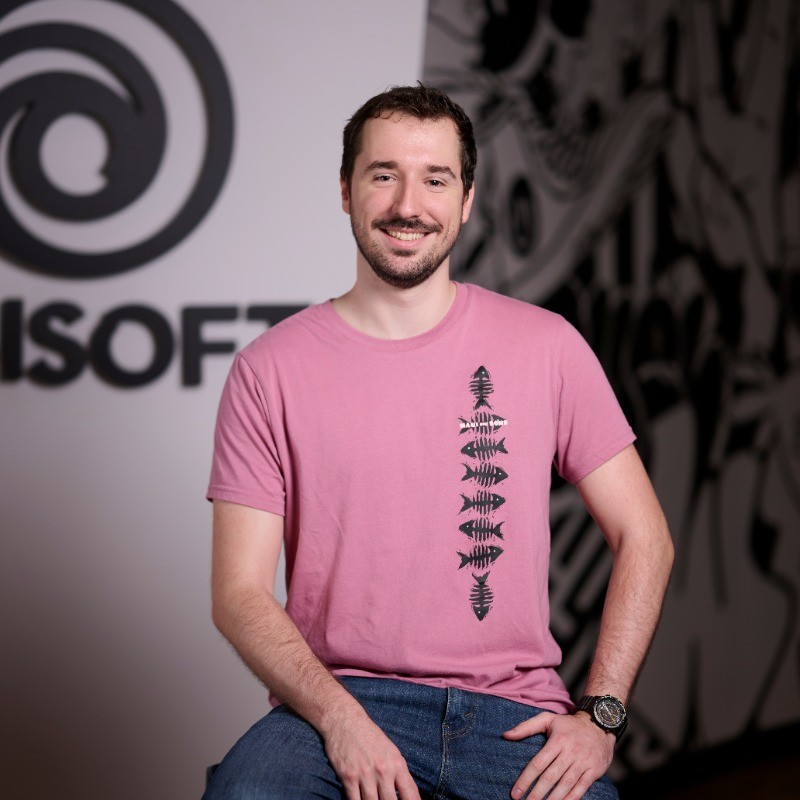 Arnauld Alex
Arnauld Alex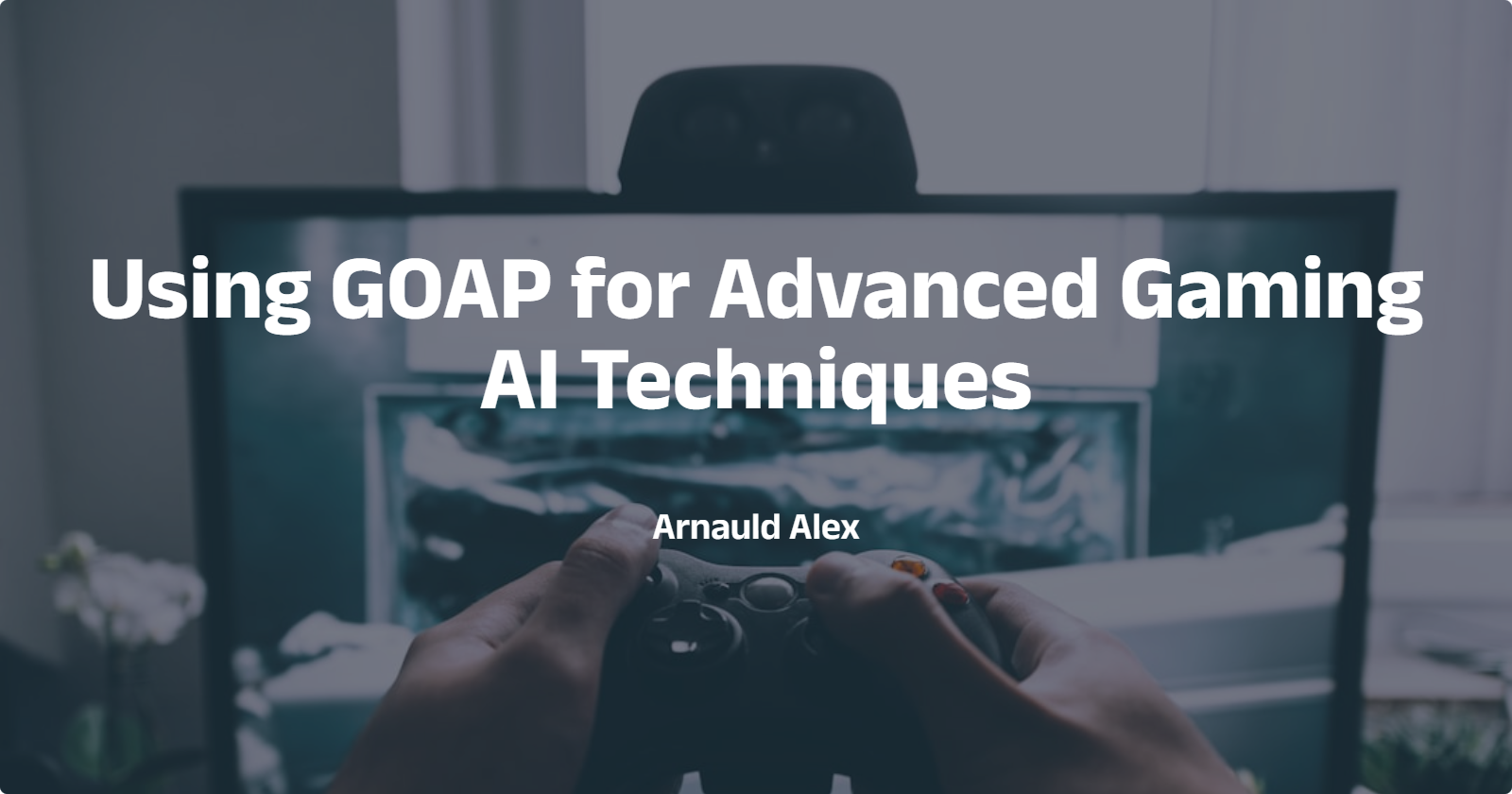
TL;DR 📝
GOAP (Goal-Oriented Action Planning) is an advanced AI technique used in gaming to create intelligent and adaptive behaviors in game characters. Unlike traditional AI methods, GOAP allows characters to dynamically plan and execute actions to achieve specific goals, enhancing realism and engagement. Key components include goals, actions, world state, and planning algorithms. Advanced techniques like dynamic goal selection, hierarchical GOAP, and multi-agent GOAP further improve AI sophistication. Successful implementations in games like F.E.A.R. and Horizon Zero Dawn showcase its potential. Future trends include integrating machine learning and real-time adaptation to further enhance gaming AI.
This blog provides an overview of Goal-Oriented Action Planning (GOAP) without delving into technical details or code tutorials. The focus is on helping you understand GOAP's key concepts and its significance in gaming AI.
Introduction
Welcome to the world of GOAP in gaming AI ! Advanced AI techniques like GOAP are crucial for creating immersive and lifelike game experiences.
What is GOAP ? 🤔
GOAP stands for Goal-Oriented Action Planning, a powerful AI architecture that allows game characters to plan and execute complex sequences of simple actions to achieve specific goals. Unlike traditional AI methods that rely on predefined scripts or simple decision trees, GOAP gives characters a more flexible and dynamic way to interact with their environment and other entities.
Importance of advanced AI in gaming
In today's gaming industry, players expect more than just stunning visuals and engaging storylines—they demand intelligent and responsive AI. Advanced AI systems enhance gameplay by making non-player characters (NPCs) more believable and challenging. GOAP, with its structured yet flexible approach, is a game-changer in this regard.
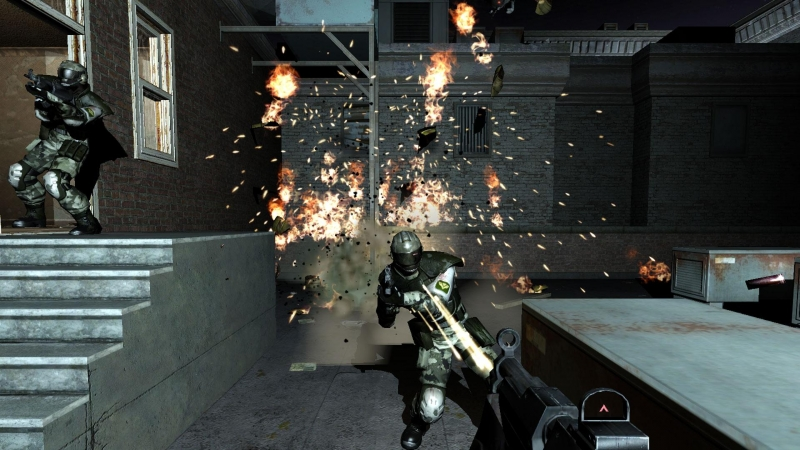
Overview of the article
In this article, we'll dive deep into the mechanics of GOAP, exploring its core principles, benefits, and implementation strategies. We'll also discuss advanced techniques, showcase real-world examples, and address common challenges. Whether you're a seasoned developer or just starting, this guide will equip you with the knowledge to leverage GOAP for creating smarter, more engaging game AI.
Basics of GOAP
Definition and core principles
At its heart, GOAP is all about enabling game characters to think and act like humans by pursuing goals through a series of actions. Here are the core principles :
Goal-Oriented : Characters have specific objectives they aim to achieve.
Action-Based : Characters choose from a set of actions to achieve their goals.
World-State : Characters have a representation of the game's current environment and their own status
Planning : Characters generate plans, sequences of actions, to reach their objectives.
Comparison with traditional AI techniques
Traditional AI techniques often involve finite state machines (FSMs) or behavior trees, where behaviors are predefined and triggered by specific conditions. While effective, these methods can be rigid and difficult to scale for complex behaviors. GOAP, on the other hand, offers a more dynamic approach, where characters can evaluate the world state and plan their actions accordingly, resulting in more adaptive and intelligent behaviors.
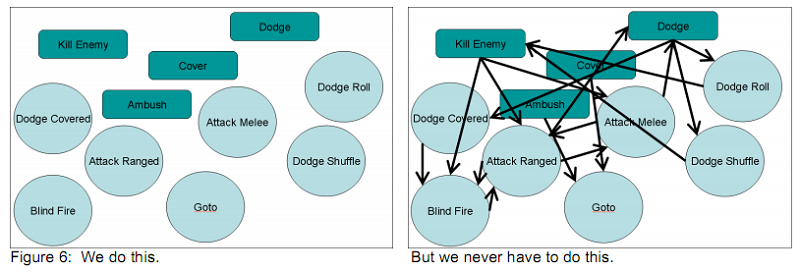
Benefits of using GOAP in gaming
GOAP offers several advantages over traditional AI techniques :
Flexibility : Characters can adapt their plans based on changing circumstances.
Scalability : Easier to manage and expand complex behaviors.
Realism : Characters exhibit more lifelike and unpredictable behaviors.
By using GOAP, developers can create more engaging and challenging AI that enhances the overall gaming experience.
Key Components of GOAP
To effectively implement GOAP in your game, it's essential to understand its key components. Let's break down the building blocks of a GOAP system.
Goals
Goals are the objectives that drive your characters' behavior. Each goal represents a desired state the character aims to achieve. For instance, an NPC might have goals like "Find Food," "Defend Base," or "Patrol Area." Goals are usually assigned a priority or cost to help the AI determine which goal to pursue first based on the current situation.
Actions
Actions are the steps a character can take to achieve their goals. Each action has preconditions (requirements that must be met for the action to be performed) and effects (changes to the world state that result from the action). For example, the action "Eat" might have the precondition "Has Food" and the effect "Not Hungry." Actions form the building blocks of the plan a character creates to achieve its goals.
World State
The world state is a representation of the game's current environment and the status of the characters within it. It includes information like the character's health, location, inventory, and the state of other game entities. The world state is constantly updated and used by the GOAP system to evaluate which actions are feasible and which goals are achievable.
Planner and Planning Algorithms
The planner is the component responsible for generating a sequence of actions (a plan) to achieve a specific goal. Planning algorithms, such as A* (A-star), are often used to search through possible actions and their effects to find the most efficient path to the goal. The planner evaluates the preconditions and effects of each action, considering the current world state and the desired end state defined by the goal.
Implementing GOAP in Gaming AI
Setting up the GOAP framework
Define Goals and Actions :
List out all the goals your character may have.
Create a set of actions that can be taken to achieve these goals.
For each action, specify the preconditions and effects.
Initialize the World State :
Represent the initial state of the game world.
Ensure the world state is dynamically updated as the game progresses.
Create the Planner :
- Implement a planning algorithm (e.g., A*) to generate plans based on the current world state and available actions.
Defining goals and actions
When defining goals and actions, think about the various scenarios your characters might encounter. For example, a guard NPC might have the following goals and actions :
Goals :
Patrol Area
Investigate Noise
Attack Intruder
Actions :
MoveTo (precondition : path available, effect : at destination)
Listen (precondition : none, effect : detected noise)
Attack (precondition : enemy in range, effect : enemy health reduced)
Specifying preconditions and effects
Preconditions and effects are critical for ensuring that actions are only taken when appropriate and that the world state is updated correctly. For example :
Action : MoveTo
Preconditions : Path available
Effects : At destination
Action : Attack
Preconditions : Enemy in range
Effects : Enemy health reduced
Integrating with game logic and engine
Integrating GOAP with your game logic involves :
Continuously updating the world state based on game events.
Allowing characters to evaluate their goals and generate plans in real-time.
Ensuring that actions are executed correctly and their effects are reflected in the world state.
Performance considerations
While GOAP can significantly enhance AI behavior, it's essential to manage its performance impact. Consider the following strategies :
Optimize the planning algorithm to reduce computation time.
Limit the frequency of plan generation to avoid excessive CPU usage.
Use hierarchical planning to break down complex plans into simpler sub-plans.
By carefully implementing these steps, you can create a robust GOAP system that brings your game characters to life with intelligent and adaptive behaviors.
Advanced Techniques in GOAP
Dynamic goal selection
In more sophisticated games, static goal priorities may not be sufficient. Dynamic goal selection allows characters to adjust their priorities based on real-time factors. For instance, a character might prioritize finding shelter if a storm begins or seeking medical help if injured. This adaptability makes the AI more responsive and realistic.
Hierarchical GOAP
Hierarchical GOAP breaks down complex goals into smaller, manageable sub-goals. This approach simplifies planning and execution, making it easier to handle intricate behaviors. For example, the goal "Defend Base" could be divided into sub-goals like "Patrol Perimeter," "Set Traps," and "Alert Allies." Each sub-goal can be planned and executed independently, allowing for more modular and scalable AI behavior.
Multi-agent GOAP
Multi-agent GOAP involves coordinating multiple AI characters to achieve common or complementary goals. This technique is particularly useful in strategy games or scenarios where teamwork is crucial. By sharing goals and plans, AI agents can work together more effectively. For instance, in a squad-based shooter, one agent might lay down suppressive fire while another flanks the enemy.
Case Studies and Examples
Successful implementation in existing games
One notable example of GOAP in action is in the game F.E.A.R. The AI in F.E.A.R. is known for its tactical behavior, such as flanking, taking cover, and using the environment to its advantage. This level of sophistication is achieved through GOAP, which allows the AI to dynamically plan and execute complex combat strategies.
Another example is Horizon Zero Dawn, where the AI-controlled machines exhibit lifelike behaviors. These machines can pursue multiple goals like patrolling, hunting, and defending themselves, all driven by a GOAP system that ensures they act intelligently and believably.
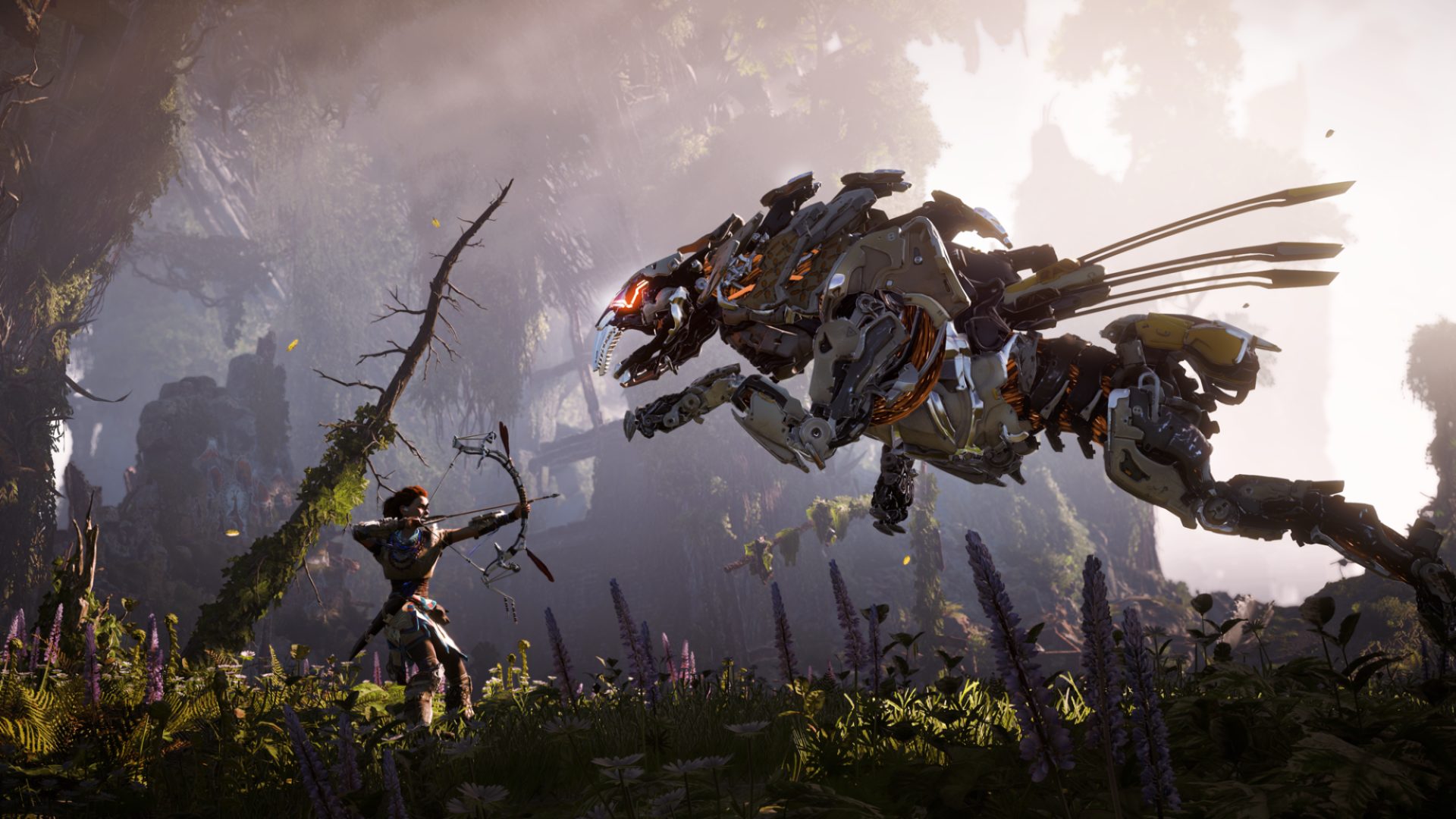
Lessons learned and best practices
Keep Actions Modular : Design actions to be small and reusable to make the planning process more efficient.
Prioritize Goals Dynamically : Allow goals to change priority based on the game's context for more adaptive AI.
Debug Incrementally : Test each component of your GOAP system independently to identify issues early.
Challenges and Solutions
Scaling complexity
As the number of goals and actions increases, the planning process can become computationally expensive. To manage this, consider the following :
Action Pruning : Eliminate actions that are not feasible given the current world state to reduce the search space.
Hierarchical Planning : Break down complex plans into simpler sub-plans, as discussed in Advanced Techniques in GOAP.
Debugging and testing GOAP systems
Debugging AI systems can be challenging due to their dynamic nature. Use these strategies to simplify the process :
Logging : Implement detailed logging of the planning and execution processes to trace and identify issues.
Visualization : Create visual tools to display the AI's current goals, actions, and world state, making it easier to understand and debug behavior.
Unit Testing : Test individual components (like actions and goals) separately before integrating them into the full system.
Balancing performance and flexibility
Finding the right balance between performance and flexibility is crucial. Here are some tips :
Optimize Planning Algorithms : Use efficient algorithms and data structures to speed up the planning process.
Limit Plan Re-Evaluation : Avoid re-evaluating plans too frequently. Instead, allow plans to be executed to completion unless interrupted by significant changes in the world state.
Use Caching : Cache results of expensive calculations to avoid redundant computations.
By addressing these challenges proactively, you can ensure your GOAP system runs efficiently and reliably, providing a robust foundation for your game AI.
Future of GOAP in Gaming AI
The future of GOAP in gaming AI is bright, with numerous emerging trends and technologies poised to enhance its capabilities. Here’s a look at what lies ahead and the potential improvements and innovations that could shape the landscape of game development.
Emerging trends and technologies
Machine Learning Integration :
- Combining GOAP with machine learning can result in AI that not only plans actions but also learns from past experiences. For example, reinforcement learning can be used to optimize action selection based on the success of previous plans.
Real-Time Adaptation :
- Future GOAP systems will likely feature real-time adaptation to player behavior and changing game environments. This would allow AI characters to respond more dynamically to unexpected events, providing a more challenging and engaging experience for players.
Procedural Content Generation :
- GOAP can be integrated with procedural content generation techniques to create more diverse and unpredictable game worlds. This can lead to unique gameplay experiences each time a game is played.
Potential improvements and innovations
Enhanced Planning Algorithms :
- Developing more efficient and intelligent planning algorithms will enable GOAP systems to handle even more complex scenarios with reduced computational overhead. This includes leveraging advancements in heuristic search techniques and optimization algorithms.
Collaborative Multi-Agent Systems :
- Future games will feature more sophisticated multi-agent systems where AI characters collaborate and compete with each other using GOAP. This can lead to richer and more immersive gameplay experiences, especially in multiplayer and strategy games.
Seamless Integration with Game Engines :
- Improving the integration of GOAP frameworks with popular game engines (such as Unity and Unreal Engine) will make it easier for developers to implement advanced AI techniques. This includes providing comprehensive toolsets and libraries that streamline the development process.
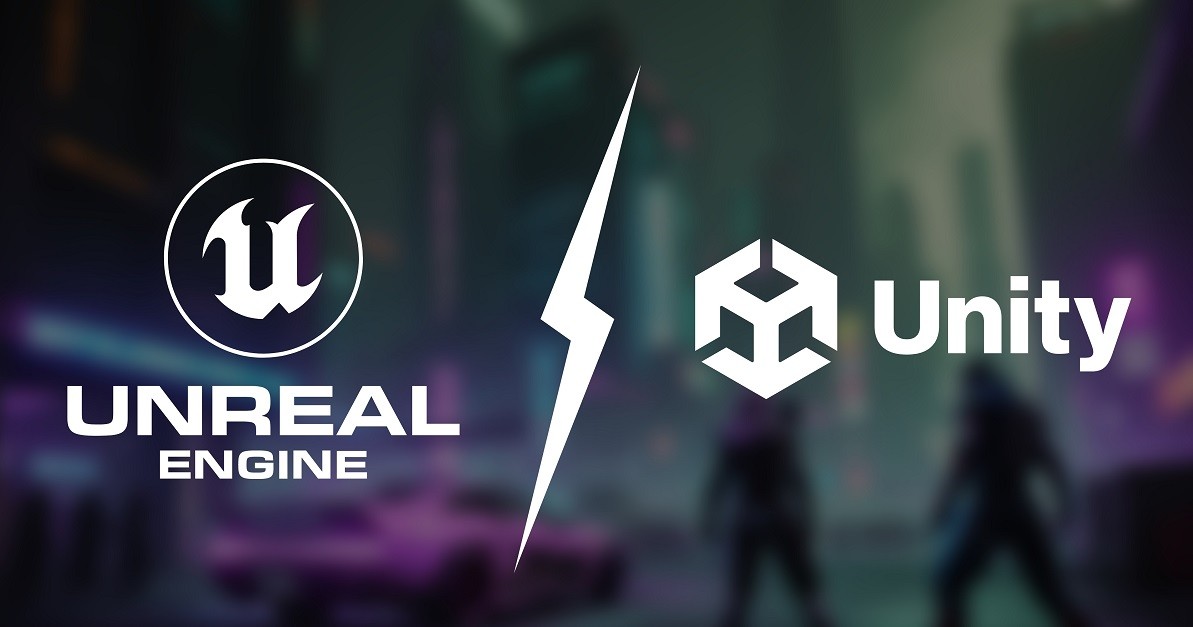
Long-term impact on game development
The long-term impact of GOAP on game development is profound. By enabling more intelligent, adaptable, and realistic AI, GOAP helps create games that are not only more enjoyable but also more immersive. As AI technology continues to evolve, we can expect GOAP to play a central role in pushing the boundaries of what is possible in interactive entertainment.
Conclusion
In this article, we’ve explored the powerful potential of Goal-Oriented Action Planning (GOAP) for creating advanced gaming AI. Let’s recap the key points and consider the exciting possibilities that lie ahead.
Summary of key points
Introduction to GOAP :
- GOAP is a flexible and dynamic AI architecture that enables characters to plan and execute complex sequences of actions to achieve specific goals.
Basics of GOAP :
- GOAP’s core principles include goal-oriented behavior, action-based planning, and real-time adaptation, offering significant advantages over traditional AI techniques.
Key Components :
- Essential components of GOAP include goals, actions, the world state, and planning algorithms, all of which work together to create intelligent and responsive AI.
Implementation :
- Implementing GOAP involves setting up a framework, defining goals and actions, specifying preconditions and effects, and integrating with game logic while considering performance.
Advanced Techniques :
- Techniques like dynamic goal selection, hierarchical GOAP, and multi-agent GOAP can enhance the sophistication and adaptability of AI characters.
Case Studies and Examples :
- Successful implementations in games like F.E.A.R. and Horizon Zero Dawn demonstrate the power of GOAP
Challenges and Solutions :
- Addressing challenges like scaling complexity, debugging, and balancing performance and flexibility is crucial for effective GOAP implementation.
Future of GOAP :
- Emerging trends, such as machine learning integration and real-time adaptation, promise to further enhance GOAP, leading to more immersive and engaging gaming experiences.
Final thoughts on the potential of GOAP for advanced gaming AI techniques
GOAP represents a significant leap forward in the realm of gaming AI, offering developers a robust and versatile tool for creating intelligent and lifelike characters. Its ability to handle complex decision-making processes and adapt to changing environments makes it an invaluable asset in modern game development. As we continue to explore and innovate with GOAP, the possibilities for creating more immersive and dynamic game worlds are virtually limitless.
References and Further Reading
For readers interested in diving deeper into GOAP and advanced AI techniques, consider adding a section for references and further reading :
"Artificial Intelligence for Games" by Ian Millington and John Funge : A comprehensive guide covering various AI techniques used in game development.
"Programming Game AI by Example" by Mat Buckland : Provides practical examples and detailed explanations of different AI methodologies, including GOAP.
GamedeveloperArticles : The website offers numerous articles and case studies on implementing AI in games.
Unity and Unreal Engine Documentation : Both engines have extensive documentation and tutorials on AI programming and GOAP implementations.
AI and Games website is an educational series that aims to provide insight into how artificial intelligence is used in games, and how academic research is changing the start of the art.
Jeff Orkin's website on GOAP 🌟
Jeff Orkin's GDC Talk in 2006 : Three States and a Plan: The A.I. of F.E.A.R.
To all game developers : Dive into the world of GOAP and explore its potential for your projects. Experiment with different goals, actions, and planning strategies to see how GOAP can elevate your game’s AI to new heights. By embracing this powerful AI technique, you can create more engaging and challenging experiences for players, setting your games apart in an increasingly competitive market.
Thank you for reading my blog ! If you enjoyed this post and want to stay connected, feel free to connect with me on LinkedIn. I love networking with fellow developers, exchanging ideas, and discussing exciting projects.
Looking forward to connecting with you ! 🚀
Subscribe to my newsletter
Read articles from Arnauld Alex directly inside your inbox. Subscribe to the newsletter, and don't miss out.
Written by

Arnauld Alex
Arnauld Alex
I am a dedicated AI game programmer, former software engineer in aeronautics domain. With a strong passion for AI, game programming, and full-stack development. I thrive on learning new technologies and continuously improving my skills. As a supportive and collaborative person, I believe in adding value to every project and team I work with. Connect with me on LinkedIn